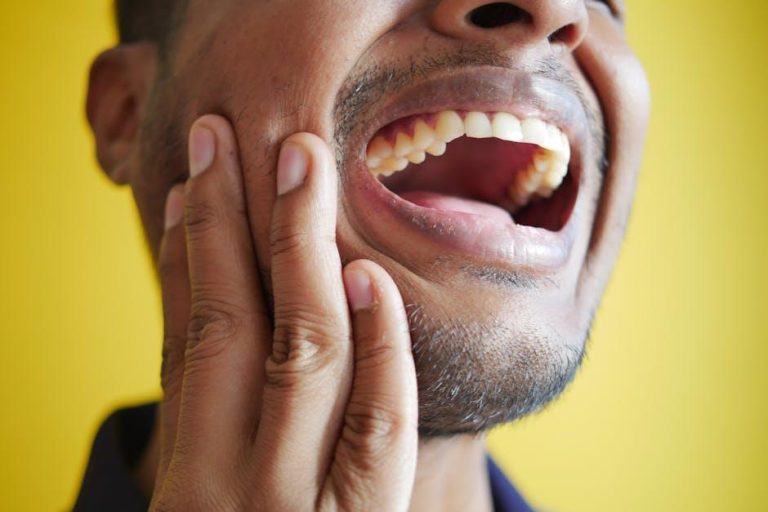
What Qualifies As A Dental Emergency? – Texas A&M Today
Dental emergencies can strike unexpectedly and knowing when to seek urgent care is crucial for protecting your oral health. Whether it’s a severe toothache or a knocked-out tooth, understanding what qualifies as a dental emergency can save you from unnecessary pain, prevent complications, and help you find timely and effective treatment. In this article, Texas A&M dental experts break down the most common dental emergencies, offer practical tips for handling these situations, and guide you on when to reach out to your dentist immediately.
Understanding the Definition of a Dental Emergency
A dental emergency refers to any oral health issue that requires immediate attention to alleviate severe pain, stop bleeding, prevent infection, or save a tooth. Not all dental problems are emergencies — some can wait for routine care, while others need urgent procedures to avoid permanent damage.
Key characteristics of a dental emergency include:
- Rapid onset of pain or discomfort
- Danger of infection spreading
- Significant trauma to the mouth or teeth
- Bleeding that doesn’t stop quickly
- Swelling that impedes breathing or swallowing
Common Dental Emergencies You Should Never Ignore
1. Severe Toothache
Intense, persistent tooth pain could signal infection, decay reaching the inner pulp of the tooth, or abscess formation. It’s vital to get professional help promptly to reduce pain and avoid systemic complications.
2. Knocked-Out Tooth (Avulsed Tooth)
A tooth that’s completely dislodged from its socket needs immediate attention. Quick action can save the tooth if handled properly and replaced within an hour.
3. Cracked or Broken Teeth
Trauma causing chips, cracks, or breaks can lead to nerve exposure or infection. Even if pain is mild initially, an emergency dental visit is recommended.
4. Lost Filling or Crown
While not always painful, a lost restoration can expose the tooth to damage and sensitive nerves. Prompt dental care can prevent further decay or discomfort.
5. Abscess or Infection
Signs of infection include swelling, pus, fever, and unbearable pain. Dental infections can spread quickly, so immediate treatment is critical.
6. Soft Tissue Injuries
Cuts to the tongue, gums, cheeks, or lips that continue to bleed heavily require emergency care to prevent excessive blood loss and infection.
Dental Emergency vs. Non-Emergency: When Can You Wait?
Differentiating between emergency and non-emergency situations can help you avoid unnecessary ER visits or delays in care. Use the table below for quick reference.
| Situation | Is it a Dental Emergency? | Recommended Action |
|---|---|---|
| Severe tooth pain with swelling | Yes | Contact your dentist immediately |
| Minor tooth sensitivity | No | Schedule a routine dental check-up |
| Knocked-out tooth | Yes | Rinse and try to reinsert; see dentist within 1 hour |
| Lost crown without pain | Sometimes | Contact dentist to replace soon |
| Bleeding gums during brushing | No | Maintain oral hygiene; see dentist if persists |
| Severe jaw pain and limited mouth opening | Yes | Seek emergency dental care |
Practical Tips for Handling a Dental Emergency
When faced with a dental emergency, your immediate actions can make a significant difference. Here are practical steps to follow:
- Stay calm: Panicking can worsen the situation. Take deep breaths and focus on what to do.
- Control bleeding: Use clean gauze or a cloth to gently apply pressure to stop bleeding.
- Preserve knocked-out teeth: Rinse the tooth gently without removing any tissue fragments and keep it moist—ideally in milk or saline.
- Manage pain and swelling: Use over-the-counter pain relievers and apply cold compresses on the outside of your face.
- Avoid touching injured areas with fingers or tongue: This can prevent further damage or infection.
- Contact your dental provider immediately: Many Texas A&M affiliated dental clinics offer emergency services or can refer you to specialists.
Case Study: Emergency Dental Care at Texas A&M
Recently, a student at Texas A&M sustained an injury during intramural sports causing a fractured front tooth and significant pain. Thanks to the quick response from the Texas A&M Dental Corps emergency team, the broken tooth was stabilized within hours, preventing worsening damage and alleviating the student’s discomfort. This highlights the importance of knowing when and where to seek urgent dental care on campus.
Benefits of Seeking Prompt Emergency Dental Care
- Pain Relief: Quick treatment eases pain and discomfort promptly.
- Tooth Preservation: Saving natural teeth is often possible with fast intervention.
- Prevents Infection: Early antibiotics or dental procedures limit infection spread.
- Saves Money: Avoids complicated, lengthy, and expensive procedures by addressing issues early.
- Peace of Mind: Knowing you have professional support reduces anxiety during emergencies.
Conclusion
Knowing what qualifies as a dental emergency is vital for timely and effective care. Whether you’re a Texas A&M student, faculty member, or community resident, being informed about urgent dental problems and how to respond can protect your oral health and overall well-being. Remember, severe tooth pain, knocked-out or broken teeth, infections, and heavy bleeding always require swift professional attention. When in doubt, contact your dental provider immediately to ensure the best outcome for your smile.


